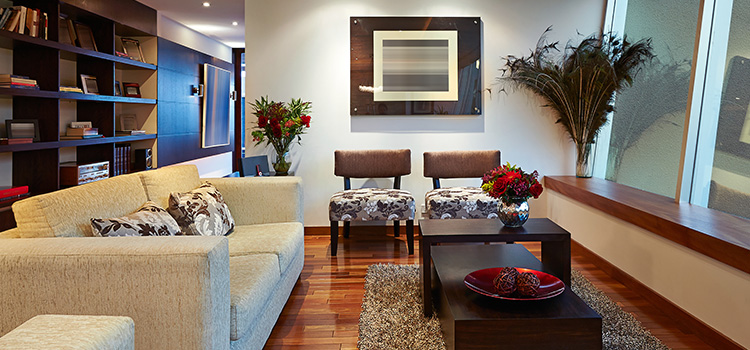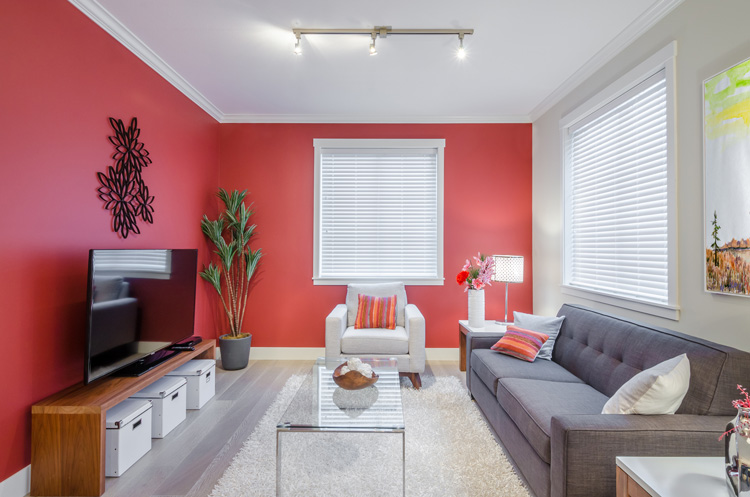Tips for Decorating the New Home of Your Dreams – Space & Furniture
Decorating Your New Home – A Series from South Pointe
We know that decorating the house of your dreams can be a big job, and in order to enable yourself to love the place as much as possible and really feel at home, you want to do it right. Therefore, in order to help the new home owners in our Gainesville community and throughout the country settle into their space in style, South Pointe has put together a blog series dedicated to sharing home decorating tips. The blog post titled, Tips for Decorating the Home of Your Dreams — Color, was the first part of the series, and this second installment will discuss the next two important features of the house to address: space and furniture.
Space
Work with the scale of the room.
Your new home will look more inviting if a substantial amount of space in each room is filled. Keeping about three-quarters of the room addressed in some way, whether with a color, texture, or object, will produce the feeling of having properly fulfilled the purpose of the space. Particular design styles will adjust the fill levels according to their own definitions, but remembering that your house is a home, not an art gallery or a storage shed, will render each area more relaxing.
Places for humans to function within the room are essential, so do not cram each corner with mammoth chairs or shrines to your favorite collectible. Conversely, spaces stripped down to one item per wall with great canyons between the furniture will cause chilly drafts of anxiety to wash over your guests.
The moral of the story is: decor needs to adjust to the size and scale of a room while still affording personal expression and communal coziness in order to engender love for your living spaces.
Test out different options for furniture placement.
When you first start placing furniture in your new home, organize each room in a way that works and seems most convenient at the time. If you have the space, put the furniture in the middle of the room and move toward the walls. This technique creates more complexity and visual appeal to a living area.
Later on, after your move-in is complete, try a new take on the layout every once in a while to see what more comfortable combinations you can come up with for the furniture. You may start to really despise a room if the furniture is not placed properly, so exhaust your options slowly over time until you arrive at the perfect arrangement.
Furniture
Pick pieces of furniture that spark your interest and speak to your personality.
Even if your pocketbook allows, prevent yourself from buying everything at once so that you do not end up duplicating the showroom floor in your new home. Allow yourself the time to see how your family will occupy a space and in which direction you find your personal style drawn. Also, privilege yourself with a limitless amount of places to buy from: neighborhood boutiques, eclectic antique shops, nationwide chains, thrift stores, and local or online garage sales.
Accept secondhand pieces and inherited heirlooms with ease, knowing that you can alter them all you want to pull them into the future. Mix, match, redo, and repurpose to your heart’s content in order to develop the unique look that you love. Blend high-end pieces with bargain goods and create a one-of-a-kind tribute to your independent tastes.

Opt for cozy over showy.
The home you love is not only about looks: it is also about making your surroundings feel familiar and welcoming to you. Therefore, go for pieces that connect with all of your senses.
Buy the chair that feels best to your back; indulge in leather if you love the smell; find a rug that keeps the flooring quiet. Aesthetics can play a big role in your decision-making, but just remember that furniture should address the needs of both comfort and style. If you can’t picture yourself really sitting at that desk or breathing in that bowl of potpourri, then don’t buy it. If coziness is the main goal of your home, then compromise on appearance every now and then.
Love what you can when you can.
Don’t forget that furniture is the one thing you can bring in and out of the room; therefore, you never have to be stuck with it. Furniture can be the most transitory or the most permanent component of a space depending on how much you like it. You don’t have to hold onto something you don’t love forever: if you have to buy discount dining room chairs in the beginning of your time in your new home just to have somewhere to sit, resolve to save up and replace them with higher quality versions later.
However, if you really cherish a piece, you can make it last. If you ever find the couch of your dreams from which only death would you part, keep the rest of the room fresh around it by repainting the walls and complimenting it with more modern accessories every few years. Over time, you will find yourself drawn to new pieces sporadically, so determine to let your budget and your contentment keep you focused when it comes to furniture.
Next Phase:
With the first three features — color, space, and furniture — appropriately managed, the house will be very close to completion. Just two more factors to consider remain: lighting and texture. Read the third part of this South Pointe blog series to discover how to handle these subjects and finish the process of creating the home you love.




